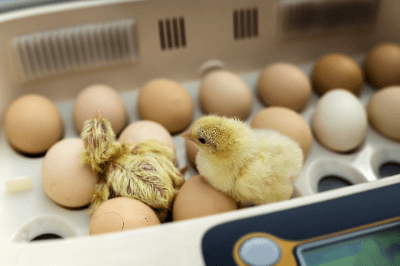What Is an Incubator?

An Incubator is a device designed for the artificial incubation of eggs.
It is also referred to as a hatching machine or an incubator. Each living organism has an optimal incubation temperature, and by maintaining that temperature consistently, artificial conditions for egg incubation can be created.
Uses of Incubator
Incubators are primarily used for the artificial incubation of eggs. By maintaining a constant temperature and humidity, they facilitate the incubation process. Some models can automatically manage temperature and humidity and calculate the expected hatching date.
They are commonly employed in the production of chicks for pets like parrots and livestock animals such as chickens.
Features of Incubator
Advantages
One of the key advantages of incubators is their ability to provide the necessary environmental conditions, such as temperature and humidity, required for egg incubation. Temperature management is especially crucial for eggs, as even a slight deviation from the optimal incubation temperature can significantly impact the hatching rate.
Some incubators can automatically turn the eggs, a process aimed at preventing the embryo from sticking to the inner shell. While manual egg turning can be time-consuming, automating this process significantly improves efficiency.
Moreover, some incubators calculate the expected hatching date based on egg management. This feature facilitates easier planning of production schedules and shipping dates.
Disadvantages
One drawback of incubators is the potential inability of some devices to effectively manage temperature and humidity. While these parameters are generally set and managed by the incubator, variations between the set and actual temperature or humidity may occur due to external factors or device characteristics.
As mentioned earlier, temperature and humidity have a significant impact on hatching rates. Therefore, it is essential to monitor how far the internal temperature and humidity of the incubator deviate from the set values.
Types of Incubators
There are two types of incubators: three-dimensional incubators and flat-panel incubators, each with distinct characteristics.
1. Three-Dimensional Incubator
Three-dimensional incubators are suitable for hatching a large number of eggs. The storage space for eggs is divided into multiple tiers, and the incubator is equipped with fans to maintain a consistent temperature. Additionally, they have a heating function to keep the temperature constant.
2. Flat-Panel Incubator
Flat-panel incubators are suitable for hatching a smaller number of eggs. However, many of them lack fans to stir the air, leading to temperature variations within the incubator.
Moreover, compared to three-dimensional incubators, flat-panel incubators have limited space inside, resulting in more significant temperature and humidity fluctuations when opening and closing the door. Given that temperature and humidity changes significantly impact incubation conditions, extra caution is necessary when using flat-panel incubators.
How to Choose an Incubator
When choosing an incubator, considering functionality and the target animal is crucial.
1. Functionality
Since the functionality of incubators varies, it is essential to check if the desired features are incorporated. Common features include heating, humidifying, and egg-turning functions.
Bird eggs have varying incubation periods depending on storage conditions, so having features that help create optimal incubation conditions is indispensable. For instance, the ideal storage temperature varies by bird species but is generally around 37.5℃.
It is crucial to maintain humidity close to the conditions found in the bird’s nest, especially adjusting humidity based on conditions before and after the expected hatching date.
The egg-turning function is essential to prevent the contents of the egg from sticking to the shell, potentially leading to a decrease in hatching rates or adverse effects on chicks.
2. Target Animal
Different bird species require different incubation conditions, so choosing an incubator that meets the conditions for the eggs you want to incubate is necessary.
Some incubators are designed with specific settings for each animal species, making it advisable to purchase a dedicated incubator whenever possible.
How to Use an Incubator
Modern incubators are user-friendly, allowing for straightforward usage. You can place the eggs and set the temperature and humidity, and some models even have buttons for different animal species, ensuring that the appropriate temperature and humidity are automatically set.
However, it takes time for the incubator’s interior to reach the proper temperature and humidity. Therefore, it is advisable to confirm that the set values have been reached before placing the eggs.